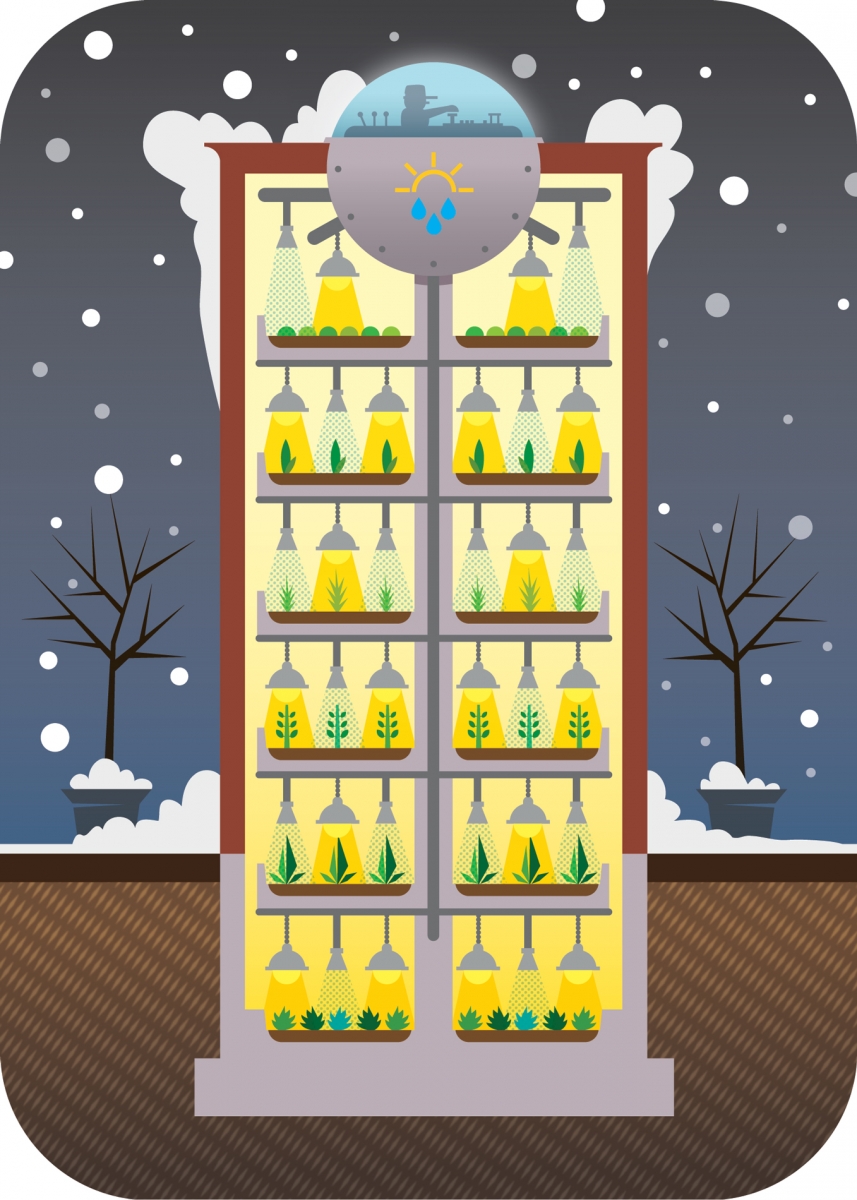Illustration by Marc Nipp
Cathryn Sprague and Ryan Mason own one of the most unique commercial farms in the Edmonton area. It occupies 300 square feet of land and, at full capacity, can generate an annual crop yield of roughly 4,500 kilograms. And it’s located in a warehouse loft in the south side of the city.
Sprague and Mason’s operation, Reclaim Urban Farm, is part of an urban agriculture movement taking place in cities around the world. The duo specializes in vertical farming, which involves growing food in multiple tiers in a controlled indoor environment. Reclaim’s setup has herbs and greens growing in 200 garden trays stacked on four shelves equipped with sun blasters – full spectrum fluorescent tube lights that make photosynthesis possible.
“You can really pack a lot into a super tiny space,” says Sprague about the farm, which grows an assortment of herbs, microgreens, shoots and edible flowers.
Reclaim’s output may be modest, but, collectively, urban farmers may become key players in a world that will see its population grow to 9.6 billion people – with 80 per cent of them living in urban centres. Sprague believes it makes sense to have more food production sources available closer to home, a point she regularly hears through customer feedback.
“Some people are really excited about finding the food is growing right here,” she says. “For others, it’s the nutrition aspect of having the produce picked the day before, and the environmental aspect of the reduction in transportation because you’re able to grow things locally.”
“One of the key advantages of vertical farming is being able to move everything inside and engineer everything about the environment,” says Michael Taschuk, owner of G2V Optics, a technology firm specializing in sunlight engineering for research into such fields as seed germination and plant growth. “If you can get the lighting under control, and get the temperature, carbon dioxide, humidity, fertilizer and everything else under control, you can really improve the overall efficiency of the process.”
